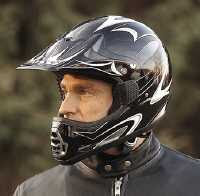Go karts were first created in the United States in the 1950s with the majority of historians crediting Art Ingels as the inventor. He built his first go kart in California in 1956 and it was during this post-war period where airmen raced these go karts as a way to pass the time.
They are referred to as go karts, go carts, go-karts, shifter karts, gokarts and many other differently spelled variations. Go karts are related to open-wheel racing such as Formula One and Indy Car. In fact, many top professional race car drivers, including Michael Schumacher, Sarah Fisher, Darrell Waltrip, Tony Stewart and Kyle Petty, got their start on the go kart racing circuit.
Go kart enthusiasts can easily become addicted to the thrill of racing. Once you’ve experienced the excitement it’s hard to let it go. There are ATV all terrain vehicles, dirt bikes, scooters, mopeds, mini bikes and motorcycles, but none give a driver any more of an adrenaline-rush than the popular go kart. They are simple 4-wheeled vehicles with no suspension (relying on chassis flex). They are basically just a smaller version of the professional open wheel cars and race on similar, but smaller, racing tracks.
Go karting can be a stepping stone for drivers desiring to work their way up to professional Formula One or Indy Car racing. It’s a cheaper way to get involved with racing. If a driver shows talent on the go kart circuit he can then move up to the more expensive divisions of motor racing including Formula One and Indy Car.
But go karting is not just for the professionally-minded. Most of the time go karts are raced by non-professionals, people just out for a little fun. Go karts have become popular all over the world and are found in most larger cities. For the faint of heart there are extremely tame tracks located in many family fun centers and amusement parks.
So what is a go kart? Go karts are made up of a chassis, motor, transmission, seat and 4 tires. Since go karts have no suspension the chassis must provide flexibility and yet retain enough stiffness to allow the kart good grip around the track and through the turns. The chassis can be either open or closed. Simply put, the closed, or caged chassis, allows protection for the driver in the event of a rollover. The open chassis does not.
Engines used in karting are typically either 2-stroke or 4-stroke. The 2-stroke engine is generally more of a specialized engine that is made by companies such as Honda or Briggs and Stratton (who also make lawnmower engines). In fact, 4-stroke engines are usually the standard type used in lawn mowers. The 2-stroke is usually more powerful than the 4-stroke and can attain up to 30 horsepower or more.
Sprint karts can usually get up to about 60 mph while the more powerful enduro karts can reach a top speed of up to 90 mph. Shifter karts use a manual transmission and a clutch to bring out all the engine has to offer and can reach speeds of 160 mph or more. These are not toys.
As with Formula One racing the kart tires can be either slicks or rain tires. Slicks have no tread and are used for best traction on a dry track. Rain tires have tread and are used during wet weather. And in icy conditions there are specially-made spiked tires that give good grip on the slippery ice.
Go karts are generally considered a safer and cheaper way to get into racing. With the many different levels available drivers can move up the line until they reach the professional level. With the right mixture of talent and practice racing alongside the top pros is certainly a possibility.
kuenselonline.com
Subscribe to:
Post Comments (Atom)

No comments:
Post a Comment